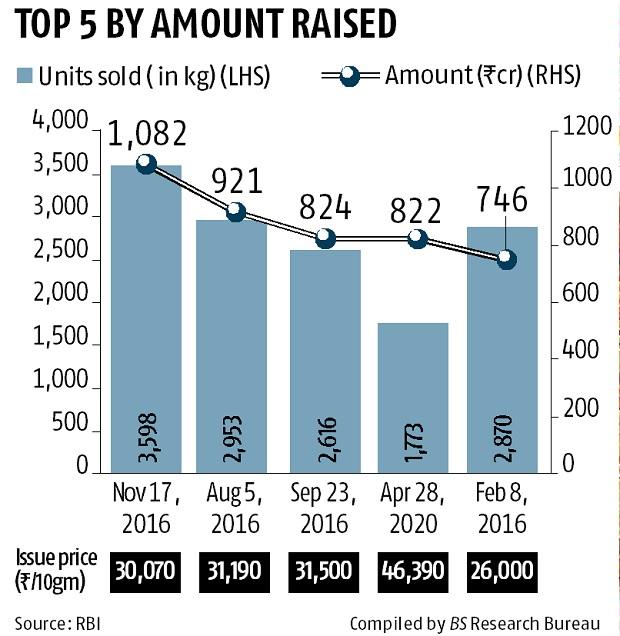The government sold sovereign gold bonds worth Rs 822 crore, during an issue that ended days before Akshaya Tritiya (26 April). The amount of bonds sold was the third-highest ever during a gold bond sale, and the highest since September 2016.
Even the quantity of underlying gold pertaining to the bonds sold in April, at 1.77 tonnes, was the highest since July 2017, according to official data regarding the sale of sovereign gold bonds.
There is a particular significance of this April bond issue, given that it was a major avenue to purchase gold on Akshaya Tritiya, during the lockdown.
With jewellery shops remaining shut and online purchase of gold and jewellery not so popular, those with investible funds preferred this route. Last year, Akshaya Tritiya was in May, but the first SGB issue was opened in June.
Gold exchange-traded funds (ETFs) were another avenue, but in comparison to sovereign gold bonds, they are less attractive. For example, there were Rs 194 crore in fresh inflows during March.

Data for April is yet to come. However, over 30 tonnes of gold was sold on Akshaya Tritiya last year. In contrast, hardly 10 per cent of that was estimated to have been sold on Akshaya Tritiya this year, including gold bonds.
Over a million marriages take place on this day, and even more during the occasion of Gudi Padva, which made Akshaya Tritiya a major occasion for the jewellery industry. However, this year has been a washout on account of the lockdown.
Interestingly, according to official data on SGBs, from the total 38 bond issues so far since November 2015 — when the scheme was launched — 34 took place at a price below Rs 40,000.
SGBs were announced in November 2015 as a part of the plan to curtail gold imports, and give investors the opportunity to invest in the yellow metal and earn gold price returns without actually buying the metal in its physical form, therefore avoiding unnecessary imports.
Money raised by such bonds is considered market borrowing by the government. Besides price, investors also get 2.5 per cent interest on the invested money and capital gains tax exemptions, if held till the maturity of 8 years. This is why it has become so popular.
For the first half of FY21, the first issue closed on April 24, two days before Akshaya Tritiya. The next issue opens on May 11. There will be a total of six issues during H1FY21 — one for each month — with the last issue opening on August 31 to mark Onam.
